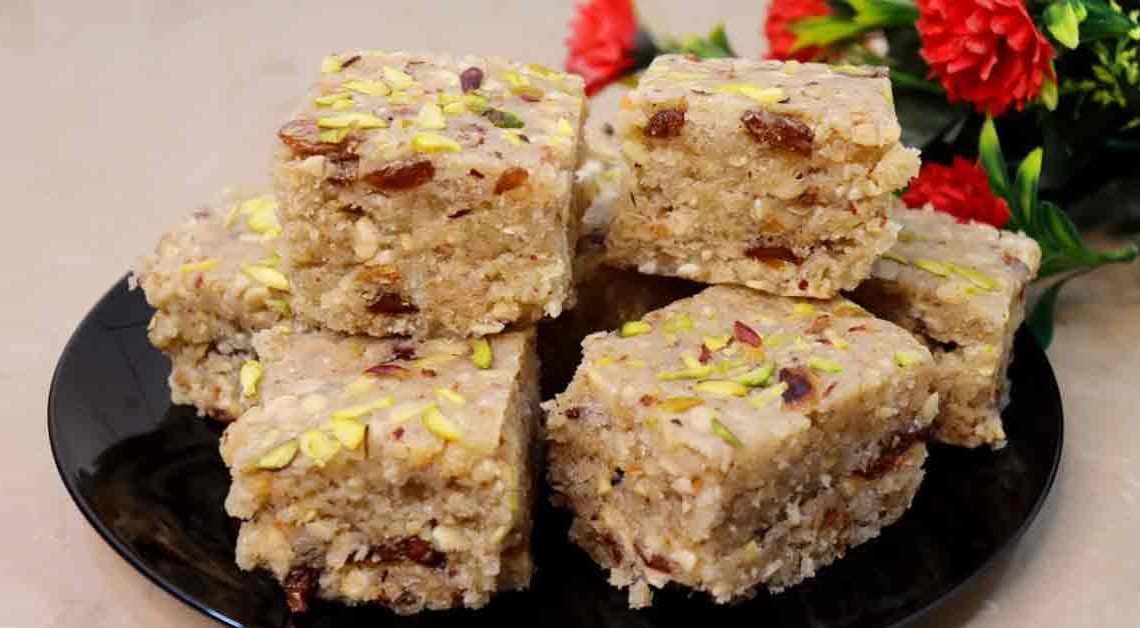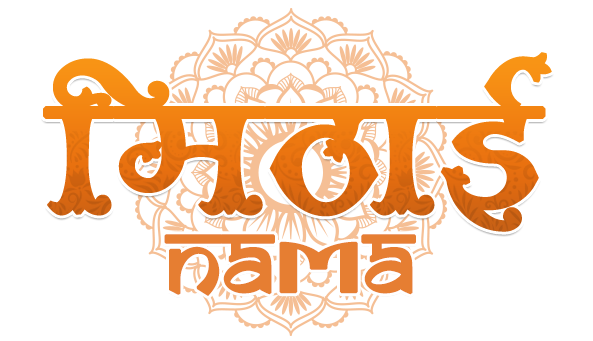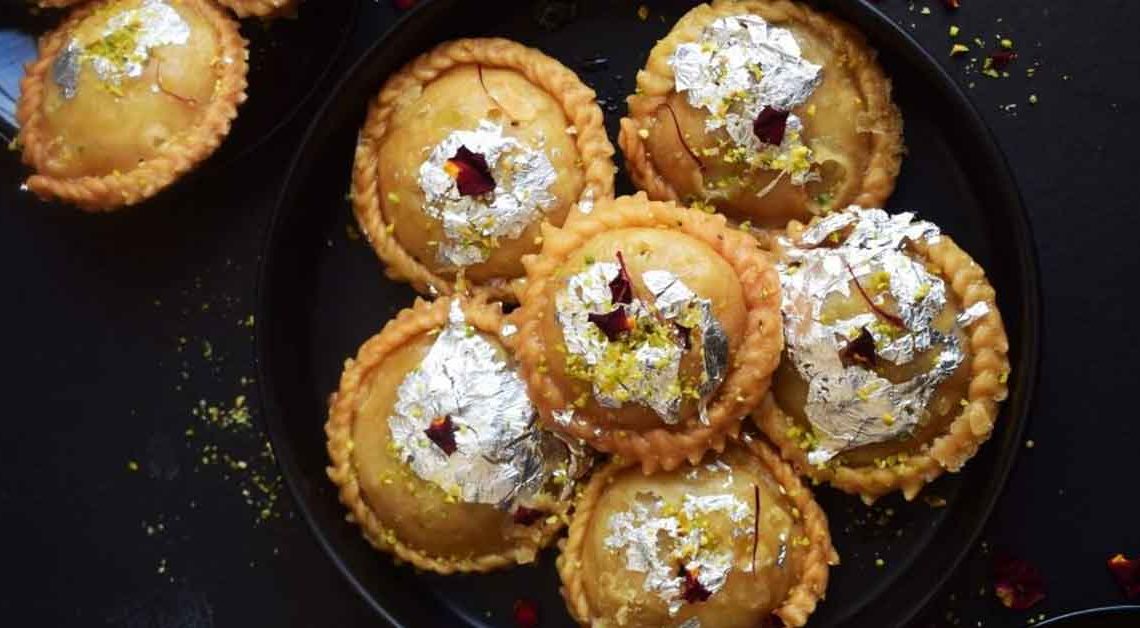Gond Pak: A Sweet Taste of Tradition and Health

Welcome to the flavorful world of Gond Pak on Mithianama, where tradition meets indulgence in every bite! In the bustling streets of India, amidst the aromas of spices and the bustle of markets, lies a hidden gem of culinary delight – Gond Pak. This ancient delicacy, with its roots in Ayurveda, not only tantalizes the taste buds but also nourishes the body and soul.
Picture this: A rich blend of edible gum, nuts, aromatic spices, and ghee slowly melding together in a cauldron, filling the air with an irresistible aroma that beckons all who pass by. Gond Pak is not just a sweet treat; it’s a celebration of tradition, culture, and the art of slow cooking.
Join me on a culinary journey as we explore the history, health benefits, and, most importantly, the mouthwatering recipes. From its origins as a medicinal remedy to its evolution into a beloved dessert, every spoonful of Gond Pak tells a story of centuries-old traditions and the ingenuity of Indian cuisine.
Get ready to embark on a delicious adventure with me as we uncover the secrets of Gond Pak – a treat for both the palate and the soul!
Origin of Gond Pak
Gond Pak, also known as Dinkache Ladoo, originates from Maharashtra, India. It has been a traditional sweet in Maharashtrian households for generations. The main ingredient, Gond or edible gum, is derived from the sap of the axlewood tree.
Gond has been used in Ayurvedic medicine for its health benefits, especially for postpartum recovery. It is believed to be beneficial for joint health, digestion, and overall strength. In Gond Pak, the edible gum is combined with other nutritious ingredients like nuts, dried fruits, ghee and jaggery or sugar.
The process of making involves roasting the edible gum until it puffs up, then mixing it with melted ghee, nuts, and other ingredients to form a thick, sticky mixture. This mixture is then shaped into small balls or pressed into a pan and cut into squares once it cools and solidifies.
History of Gond Pak
The history is deeply intertwined with the cultural and culinary heritage of India. Its origins can be traced back centuries, rooted in the traditional practices of Ayurveda, the ancient Indian system of medicine.
Over time, Gond found its way into the culinary realm, where it was incorporated into various dishes for its nutritional benefits and unique texture. It emerged as one such culinary creation, combining the medicinal properties of Gond with the richness of nuts, dried fruits, ghee, and sweeteners like jaggery or sugar.
Initially consumed as a nutritious treat, it gradually evolved into a beloved dessert, enjoyed by people across different regions of India, particularly in Maharashtra, where it has deep cultural roots. Families passed down recipes from one generation to the next, preserving its traditional preparation methods and flavors.
Cultural Significance
It holds significant cultural importance in India, particularly in the state of Maharashtra, where it is deeply rooted in tradition and heritage. Its cultural significance can be understood through various lenses:
Ayurvedic Heritage: Origins in Ayurveda highlight its traditional medicinal value. It is often consumed during winters and postpartum periods due to its believed health benefits, showcasing the deep connection between food and health in Indian culture.
Celebrations and Festivals: It is a popular sweet prepared during festivals and special occasions such as Makar Sankranti and Diwali. Its preparation and consumption are associated with joyous celebrations and family gatherings, adding to its cultural significance.
Nutritional Value: The ingredients, such as edible gum, nuts, and ghee, are considered nutritious in Indian culture. It is often consumed as a source of energy and nourishment, especially during winters.
Where is Gond Pak Famous?
Gond Pak is primarily famous in India, particularly in the state of Maharashtra, where it has deep cultural roots and is a traditional sweet dish. It is also popular in other regions of India where it is known by different names, such as Dinkache Ladoo in Maharashtra and Gond ke Ladoo in other parts of the country.
Apart from India,it is also enjoyed in neighboring countries like Pakistan, where it is known as Gond ka Ladoo or Dink Ladoo. The dish has also gained some popularity in other parts of the world, especially among those interested in Indian cuisine and traditional sweets.
Overall, its fame extends beyond its place of origin, with its unique flavor, nutritional benefits, and cultural significance making it a sought-after treat among those who appreciate traditional Indian sweets.
Interesting Facts and Trivia
Here are some interesting facts and trivia related to Gond Pak:
- Gond, the main ingredient in Gond Pak, is known for its medicinal properties in Ayurveda. It is believed to be beneficial for joint health, digestion, and postpartum recovery.
- It is often consumed during the winter months in India, as it is believed to provide warmth and energy.
- It is considered nutritious, as it is made with ingredients like edible gum, nuts, and ghee, which are rich in energy and essential nutrients.
- It is often prepared during festivals and special occasions in India, such as Makar Sankranti and Diwali, and is also offered as prasad in some regions.
- The preparation involves slow cooking the ingredients to allow the flavors to meld together, resulting in a rich and aromatic sweet treat.
Did You Know?
Did you know? Gond Pak, a traditional Indian sweet, is not just a delicious treat but also a powerhouse of nutrition! Made with edible gum, nuts, ghee, and jaggery, which offers several health benefits:
- It is high in calories, making it a great source of energy, especially during the winter months when the body needs more warmth and sustenance.
- It is packed with essential nutrients like proteins, carbohydrates, and healthy fats from nuts and ghee, providing a wholesome and balanced snack.
- It contains ingredients like gond and ghee, which are known to aid digestion and improve gut health.
- Gond is believed to be beneficial for joint health, making a good addition to the diet, especially for those with joint issues.
- In Ayurveda, it is recommended for postpartum recovery, as it is believed to help strengthen the body and aid in healing.







